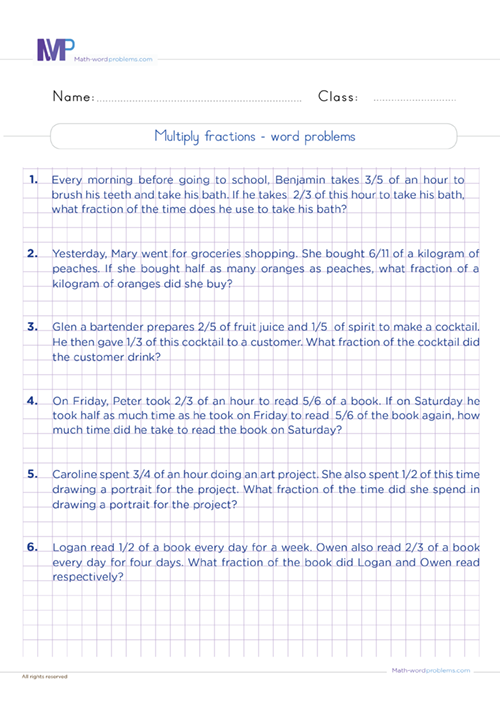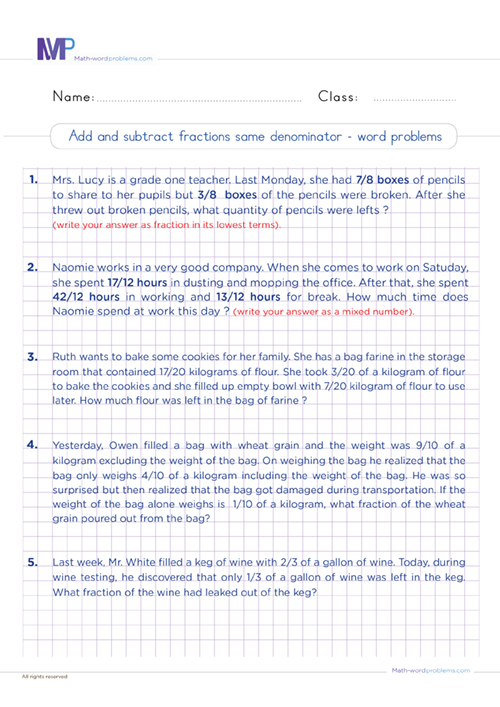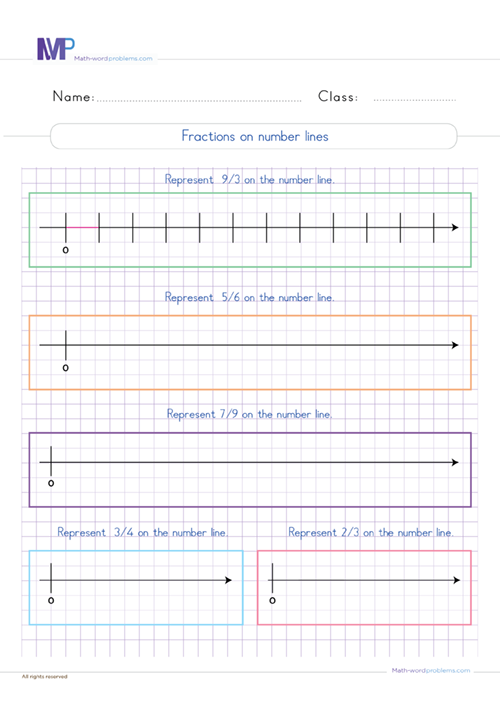 How do you multiply fractions word problems?
How do you multiply fractions word problems?
Looking for a fun way to explore how to multiply fractions word problems? The solution lies here in this our step-by-step process on how to do it. This unique step-by-step process of multiplying fractions word problems has all the technical skills you need to build genuine math skills.
In addition, we emphasize that elementary learners need to include skills such as reading, reasoning out the problem to understand it, and then solving it rather than focusing only on the mathematical computation part of the word problem.
Steps to solve multiplying fractions word problems
Below are short steps to solve multiplication of fractions word problems effectively. These steps are short and captivating to stick in your kids’ minds for a long time. Once your 6th graders engage in this resource, you will boast of their ability to identify relevant information and operations in the word problem quickly. Hence, this will significantly enhance their solving word problems on multiplication of fractions skills.
Finally, to encourage sixth graders to understand and consistently practice solving word problems, we will include some real-life challenging yet fun examples to show them how well these steps work.
Step 1: IDENTIFY
You must first decipher the important fractions and keywords in the word problem. Next, use these keywords to identify whether the problem involves a multiplication operation or performing any other operation.
- That is to say, with multiplication of fractions, we look for common keywords like “of,” “times,” “product of,”“how many,” “how much,” etc.
Note: One key Element for learners to understand is that they should not always rely on keywords alone. That is to say; the same keyword can have different meanings in different word problems.
For this reason, we reiterate on the importance of reading the question very carefully to understand the situation that the word problem is describing, then figure out exactly which operation to use
Step 2: STRATEGIZE
How will you solve or tackle the word problem?
- As mentioned earlier, from the keyword(s) in the word problem, you will know if you need to o perform a multiplication operation or any other operation.
- Nonetheless, it would be best not to count only on keywords. Also, try to understand the situation that the problem is describing first before diving into providing a solution for it.
- After knowing which operation you will perform, construct short expressions/sentences to represent the given word problem.
Step 3: SET UP
With the above knowledge in mind, you now need to write down a numerical expression representing the information in the word problem.
Step 4: PROVIDE A SOLUTION
From Step 3 above, multiply the numerators and the denominators across. Note that when multiplying fractions, a common denominator is not needed. Also, simplify the Fraction if possible. It is important to always include the unit of measurement in the final answer, if any.
Step 5: CHECK YOUR WORK
Here, ask yourself this question. “Does my answer make sense?” If “YES,” you are done. If “NO,” go back to step 1 and start all over again.
Example on how to multiply fractions word problems
Step 1: First, the important fractions here are
Step 2: Next, how will you solve the problem? This problem asks you to “find
Now, create short expressions/sentences to represent the given word problem.
- Fraction of the shawarma Grace left =
- Fraction of the shawarma Lucy ate =
- Therefore, the Fraction of shawarma that she ate = Fraction of the shawarma Grace left in the fridge × Fraction of the shawarma Lucy ate
Step 3:Then, write down a numerical expression to represent the bolded sentence in step 2 above:
Step 4: From Step 3 above, multiply the numerators and the denominators across. Note that when multiplying fractions, a common denominator is not needed. Also, always include the unit of measurement in the final answer, if any.
So she ate
Step 5: Finally, check out your work by interpreting the answer in the context of the problem. If the interpretation makes sense, then “YES,” you are done. If “NO,” go back to step 1 and start all over again.






